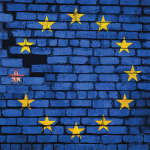Compiling our second annual Euro Elite report this month reminded me of when the late Rodrigo Uría, then managing partner of Spanish leader Uría Menéndez, recounted how he ended a heated meeting with Linklaters’ irascible former managing partner Terence Kyle by pointing out the armed guards at the entrance to his firm’s Madrid office. Back in the late 1990s, the UK elite was desperate to get into Europe.Emotions ran high.
With Brexit, the UK now wants out (the legal profession less so). But in the Continental market you could argue the English firms have been in withdrawal mode for years. Although the buccaneering expansion across the region in the 1990s and early 2000s means firms with Anglo-Saxon origin are ubiquitous, few dominate. With the exception of France, where the locals have potent competition, and the Netherlands, where Allen & Overy became a major force (by force), Global 100 firms rarely compete at the top level. Freshfields Bruckhaus Deringer is a leader in Germany, but by virtue of the only merger of equals between a European and an English firm, and even it is currently looking to strip down its local practice to bolster profitability. The Magic Circle has been on some level of modest reversal in Germany for a decade now.
And while interviews with managing partners at Europe’s elite indies show that the Brexit effect has taken its toll on some firms, particularly in deal flow, the mood is generally upbeat. Three independent Spanish players dominate the Euro Elite – no small feat given they have been exposed to one of the most volatile markets on the continent in recent years – and have found growth in Latin America. The Nordic region accounts for over a quarter of the firms in the top 100 and is a huge market which, save for a recent incursion by DLA Piper, has been left largely untouched by global rivals.
Looking at the upper quartile, where firms are ranked according to a score based on the size of the firm combined with weighted rankings from The Legal 500 data, revenue performance has certainly been credible. The average top-25 Euro Elite firm pulled in €161m in 2016. The top 25 generated €4.03bn as a whole, against €3.83bn last year.
A like-for-like comparison is artificial as there are some different firms in the top 25 this year, but for the top ten firms – which are broadly unchanged – average revenue has grown from €189.4m to €203.4m, growth that many UK-headquartered firms would be happy with. Average revenue per lawyer (RPL) has nudged up just 1% from €369,000 to €371,000. But using the average euro/sterling exchange rate for 2016, comes out at £299,000 – higher than the £254,000 posted by the UK firms occupying positions 26-50 in the Legal Business 100 (LB100) in 2016 and only slightly behind the £325,000 average for the LB100 as a whole last year.
The make-up of the top 25 has changed slightly from our inaugural report in 2016, reflecting the shifting fortunes across the region. Gone are the Russian and Baltic-based firms, making way for six Irish, five Dutch, four Spanish, three German, three Italian, two CEE, and one each from France and Sweden. Six Irish firms (seven in total in the entire 100) match the average RPL of the top 25 at €370,000 – not bad for firms where average lawyer headcount is 335 and handy timing as Dublin’s finest are having to contend with City firms investigating local launches in a post-Brexit hedge.
In continental Europe, homogeny is a myth. The dawn of the one-stop remains as remote as ever and the independents rule.
mark.mcateer@legalease.co.uk
Click here for The Euro Elite 2017












